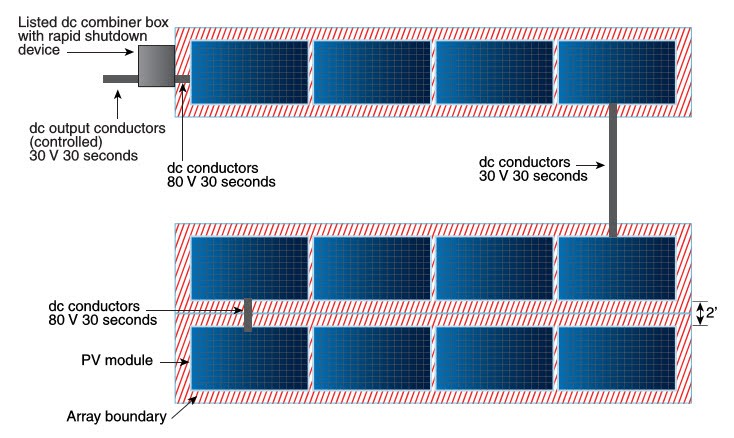Hedges
I See Electromagnetic Fields!
- Joined
- Mar 28, 2020
- Messages
- 20,596
Right now my concern is to have 2 10awg wires running 50' thru the house .
Look up 10 awg in the following tables:
Ampacity Chart | Wire & Cable Technical Resources | Lapp Tannehill
Determine the allowable ampacities of insulated copper conductors, single insulated copper conductors, and more from the National Electrical Code® Allowable Copper Conductor Ampacities tables.
10 awg has ampacity of 40A for up to three current-carrying conductors in a cable. However, the (*) refers to a note that says maximum 30A over-current protection.
If you have 4 to 6 current carrying wires (don't count separate ground wire for frames), derate to 80%, 40A x 0.8 = 32A. Still fused for 30A.
When connecting PV panels to a wire, assume that due to unusual illumination (extra light reflecting off clouds) they could produce up to 1.56 times their rating. (Actually, it is assume they produce 1.25 times rating, then add an additional 25% as safety margin.)
30A / 1.56 = 19.2A maximum total Isc of all panel strings connected in parallel.
Within those limits, wires are pretty safe against overheating. It is connectors that usually fail. So keep connectors where they aren't likely to cause a fire, e.g. inside a metal box.
Bad connections, damaged wires, shorting due to rats eating insulation can cause arcing and fires. For this reason, recent codes require AFCI for circuits going to PV panels on the roof (unless low wattage, like 300W total on a microinverter). Your 2000W of PV and 100 Voc is quite enough to make an arc and start a fire. Best if either the panels are ground-mounted or you have AFCI (which is typically built in to some inverters and charge controllers, but may have to be enabled.)




